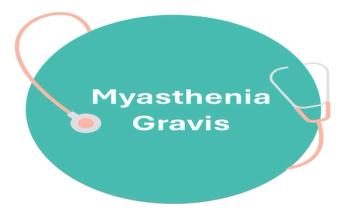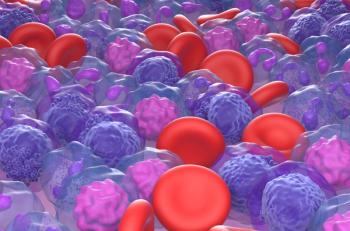
Clinical
Latest News
Latest Videos

CME Content
More News

A panelist discusses how bleeding risk assessment depends on platelet count levels (highest risk below 20,000), requiring careful medication history review to avoid drugs that impair platelet function like aspirin and NSAIDs.

Panelists discuss how autologous stem cell transplant remains essential in frontline multiple myeloma management despite improved quadruple therapy outcomes, emphasizing that current evidence still supports transplantation for eligible patients rather than deferring it.

Panelists discuss how barriers to implementing evidence-based obesity and diabetes care include limited provider time, lack of multidisciplinary teams, insufficient education about obesity physiology, and high costs of medications and programs.

Zilucoplan (Zilbrysq; UCB) is a once-daily subcutaneous C5 complement inhibitor that has demonstrated long-term treatment benefits in patients who have acetylcholine receptor antibody–positive generalized myasthenia gravis (gMG).

Revumenib shows promise for high-risk patients with acute myeloid leukemia (AML) with specific genetic mutations, demonstrating efficacy with no new safety signals.

An artificial intelligence (AI)-driven machine learning model was refined and validated internationally to accurately classify acute leukemia subtypes from routine laboratory data, according to Merlin Engelke, MS, offering a potential tool for improving diagnosis worldwide.

In this clip, Adela Perolla, MD, PhD, discusses the urgent need to address and destigmatize burnout in hematology, especially among early-career professionals, by promoting self-awareness, work-life balance, and peer support.

Burnout is rising sharply in hematology due to emotional strain, long hours, and high patient demands, according to Adela Perolla, MD, PhD, impacting both physician well-being and patient care.

Panelists discuss how emerging intrathecal gene therapy for older patients with spinal muscular atrophy (SMA) shows modest efficacy with fewer systemic adverse effects than intravenous administration, though safety concerns and limited data remain.

Panelists discuss how current therapeutic strengths include 15 approved treatments with different mechanisms of action that can work synergistically, while limitations involve variable delivery methods and complexity, leading to more aggressive upfront combination therapy approaches.

Panelists discuss how policy makers can increase biosimilar adoption through financial incentives, streamlined interchangeability rules, and addressing patent litigation delays, emphasizing that biosimilar savings will ultimately help fund the next wave of health care innovation such as cell and gene therapies.

Panelists discuss how comorbidities such as scoliosis, dislocated hips, and nutritional issues affect spinal muscular atrophy (SMA) treatment decisions, with treatment approaches evolving as patients' functional abilities improve with disease-modifying therapies.

Panelists discuss how biosimilar manufacturers can increase uptake by ensuring positive financial outcomes for all stakeholders, maintaining strong patient assistance programs, and working closely with health care providers who significantly influence biosimilar implementation.

Ola Landgren, MD, PhD, shares ADVANCE trial results, which show that adding daratumumab to carfilzomib-lenalidomide-dexamethasone (DKRd) improves outcomes in newly diagnosed multiple myeloma.

Panelists discuss how treatment individualization depends on patient-specific factors including age, comorbidities, disease severity, and personal preferences, balancing clinical guidelines with shared decision-making to optimize both efficacy and adherence.

Ola Landgren, MD, PhD, lead investigator of the ADVANCE clinical trial, outlines the study’s goal of advancing modern, minimal residual disease–guided treatment approaches.

Two posters presented at the 2025 European Hematology Association Congress support combination therapy with daratumumab, bortezomib, lenalidomide, and dexamethasone (DVRd) in transplant-ineligible or deferred newly diagnosed multiple myeloma.

Panelists discuss how bronchiectasis is more common than previously thought, with growing awareness, research, and specialized centers improving diagnosis and treatment options, though challenges remain in standardizing care and securing insurance coverage for therapies.

Panelists discuss how future bronchiectasis research will focus on precision medicine, identify treatable traits, and expand networks of Centers of Excellence to provide advanced care and clinical trial access for patients.

Subcutaneous mosunetuzumab shows promising efficacy and safety in high-tumor burden follicular lymphoma, paving the way for outpatient treatment options.

In the final part of an interview with Brian Slomovitz, MD, he highlights that the phase 3 ROSELLA trial demonstrates a safe, effective treatment for platinum-resistant ovarian cancer that does not require biomarker testing.

HHS Secretary Robert F. Kennedy Jr has disbanded the Advisory Committee on Immunization Practices, aiming to restore trust in vaccines amid concerns over politicization and integrity.

With the FDA approval of retifanlimab (Zynyz; Incyte) as the first and only first-line treatment for advanced anal cancer, researchers are now focusing on resistance mechanisms and future therapies, according to Sheela Rao, MBBS, MD, FRCP, of The Royal Marsden Hospital.

Panelists discuss how the management of immunoglobulin A (IgA) nephropathy is undergoing a transformative shift from symptom control to targeted disease modification, with emerging therapies offering new hope for patients while requiring thoughtful integration into clinical practice and health care systems.

Panelists discuss how economic considerations in immunoglobulin A (IgA) nephropathy medication management vary dramatically across chronic kidney disease (CKD) stages, with early intervention costs being modest but potentially cost-saving compared with the extraordinary expenses of advanced disease management and renal replacement therapy.
















































